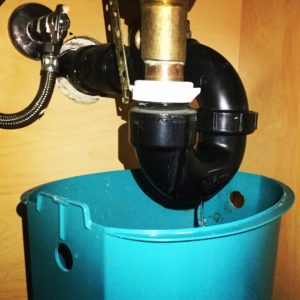 One important part of every home plumbing system is the plumbing trap, also known as a p-trap. Many homeowners believe that the purpose of a p-trap is to catch debris that falls down a drain before it travels into other plumbing system pipes. However, plumbing traps, are actually designed to block the entry of sewer gasses into your fixture drains where they can then flow into the air of your home.
One important part of every home plumbing system is the plumbing trap, also known as a p-trap. Many homeowners believe that the purpose of a p-trap is to catch debris that falls down a drain before it travels into other plumbing system pipes. However, plumbing traps, are actually designed to block the entry of sewer gasses into your fixture drains where they can then flow into the air of your home.
Read on to learn more about the plumbing trap types present in today’s homes as well as common problems and how to prevent them.
Plumbing Trap Types
Several types of traps are common in residential plumbing systems.
P-traps
Most modern homes are equipped with simple p-traps. These traps are u-shaped pipes located underneath home drains that remain filled with water at all times. The water in these traps block sewer gasses before they can enter your home through your fixture drains. While debris can accumulate in this plumbing trap type, a well-designed trap that works properly should prevent too much of this accumulation.
Drum Traps
Some older homes are equipped with drum traps. Drum traps are large, cylindrical devices that hold much more water than p-traps. While these traps do block sewer gasses well, they are not installed in new homes built today for several reasons.
First, these traps are not self-scouring, which means that solid matter can build up inside of them very easily, leading to frequent clog development. In addition, drum traps are typically installed under a home’s flooring, which can make them difficult to access when they become clogged or develop other problems that need repair.
S-traps
Another plumbing trap type found in some older homes is the s-trap. An s-trap is a simple pipe shaped like the letter s. Unfortunately, this trap type is not as reliable as the p-trap, because the water inside of an s-trap can occasionally get siphoned, or sucked, out of it when large amounts of water enter the drain it is connected to. This will allow sewer gasses to enter the home until the trap is refilled.
Common Trap Problems
Even if your home is equipped with modern, reliable p-traps, these traps can develop problems.
Dry Trap
When no water flows through a drain for an extended period of time, water in the trap can evaporate. If your traps dry out, sewer gasses can enter the home through the attached drain. Traps that dry out most often include basement floor drain traps; traps in rarely used drains; traps in homes left unoccupied for extended periods of time; and traps with leaky seals that allow water to seep out of them.
To prevent trap dry-out in an occupied home, run water through the home drains that are rarely used on a periodic basis.
If you plan to leave your home unoccupied for a month or longer, fill the traps with clean mineral oil before leaving. This mineral oil will not evaporate, as water inside of the trap can, and will continue to block sewer gasses until you return home and begin running water through the drains again.
If your basement floor drain traps dry out frequently, have a licensed plumber replace your traditional traps with self-sealing interceptors. The seals on these traps continue to block sewer gas entry into your home after the traps dry out.
Finally, keep in mind that traps with leaky seals need repair or replacement to block the entry of sewer gasses into the home.
Clogged Trap
A partial trap clog can cause a slow drain, while a full trap clog completely blocks the flow of water down a drain. Since it can be difficult for homeowners to determine whether a drain trap is clogged or the clog is located in another area of the plumbing system, contact a licensed plumber who can locate the clog and remove it without damaging your pipes in the process.
Every homeowner should understand what plumbing traps are, how they work, and the problems they can create. Contact the licensed plumbers at Spartan Plumbing Inc for all of your drain trap needs today.
